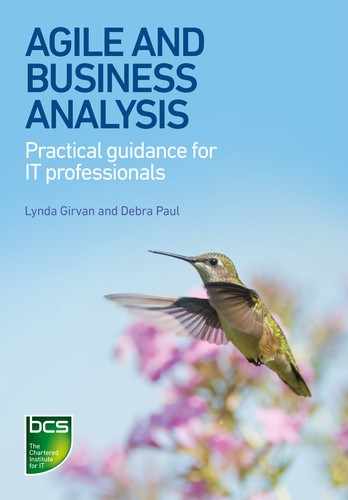1. BUSINESS ANALYSIS IN AGILE ENVIRONMENTS
The rationale for business analysis
The agile business analysis book
2. AGILE PHILOSOPHY AND PRINCIPLES
The business analysis perspective
Agile Manifesto for buiness analysts
Relating the agile principles to business analysis
Iterative development and incremental delivery
Planning for and building in change
Doing the right thing and the thing right
5. UNDERSTANDING AGILE METHODS AND FRAMEWORKS
Popular agile methods and approaches
6. MODELLING THE BUSINESS CONTEXT
7. WORKING WITH STAKEHOLDERS AND ROLES
Stakeholder categories, roles and perspectives
The relevance of goal-based analysis
Goal and functional decomposition
Using goals to achieve business agility
Using goals to define iterations and releases
The importance of prioritisation
10. DECIDING THE REQUIREMENTS APPROACH
The requirements engineering framework
Planning the requirements approach
Issues with requirements engineering
Agile requirements engineering
Requirements elicitation techniques
The role of business analysis in elicitation
11. MODELLING USERS AND PERSONAS
Benefits of a modelling approach to requirements
Modelling users and functionality
Analysing personas and misuse characters
Analysing the system context and scope
12. MODELLING STORIES AND SCENARIOS
13. ORGANISING TASKS AND REQUIREMENTS
Requirements catalogue or solution backlog?
Recording non-functional requirements
15. PLANNING AND MANAGING ITERATIONS
Managing and monitoring the iteration
The role of business analysis in agile iterations
16. CONSIDERATIONS WHEN ADOPTING AGILE
